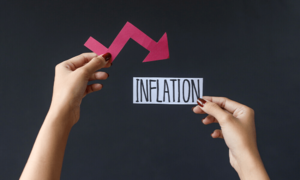Brazil's Central Bank ended a run of 12 consecutive interest rate cuts, maintaining the key Selic rate at 6.5 percent Wednesday in a decision that surprised the market.
Analysts had broadly expected one more cut to 6.25 percent. The decision reflected what the bank's committee said was "volatility" at a time of weak recovery from Brazil's worst recession on record.
The Central Bank has mounted a sustained campaign to breathe life into the moribund economy, slashing the Selic all the way from 14.25 percent in October 2016, a time when the country faced not only negative economic growth but high inflation.
Analysts said the currently rock-bottom inflation - 2.76 percent in April, which is well below the official three percent target - would have given the bank a chance to lower rates one more time.
The Fiesp and Ciesp, two industrial federations in the economic center of Sao Paulo, criticized the Central Bank's caution.
"Maintaining the Selic will delay even more the reduction in the cost of credit. We see a risk of the economic recovery dying just when Brazil was trying to get out of its worst crisis," they said in a statement.
"Growth is still very fragile... (and) expensive credit works against the country."
But analysts were factoring in the near certainty that the bank would pause cuts at the next meeting, even if not at this one, due to potential new inflationary threats.
These include possible rate hikes in the United States, the increase in oil prices and devaluation of the national currency, the real, analysts say. The real has lost 10 percent of its value against the dollar since January.
Another factor spooking the bank is the absence so far of a strongly pro-markets presidential candidate in elections due in October and the stalling of current President Michel Temer's austerity reforms.
In a statement, the bank's monetary policy committee referred to dashed "expectations for continuity in reforms and the adjustments needed for Brazil's economy."
That "raises the trajectory for inflation," it said.
After two years of recession, Brazil returned to economic growth in 2017, with gross domestic product expanding by a meager one percent.
However, the recovery has been slow and uneven.
While the government expects three percent GDP growth this year, market forecasts have fallen to 2.51 percent, the weekly Central Bank survey shows.
BR100
11,821
Decreased By
-44.7 (-0.38%)
BR30
35,819
Increased By
121.5 (0.34%)
KSE100
113,797
Decreased By
-351.4 (-0.31%)
KSE30
35,814
Decreased By
-138.4 (-0.39%)


























Comments
Comments are closed.